Learn all about passion fruit, the tropical fruit flavor bomb! Passion fruit varieties and names, storage tips, how to buy it, and nutrition information.
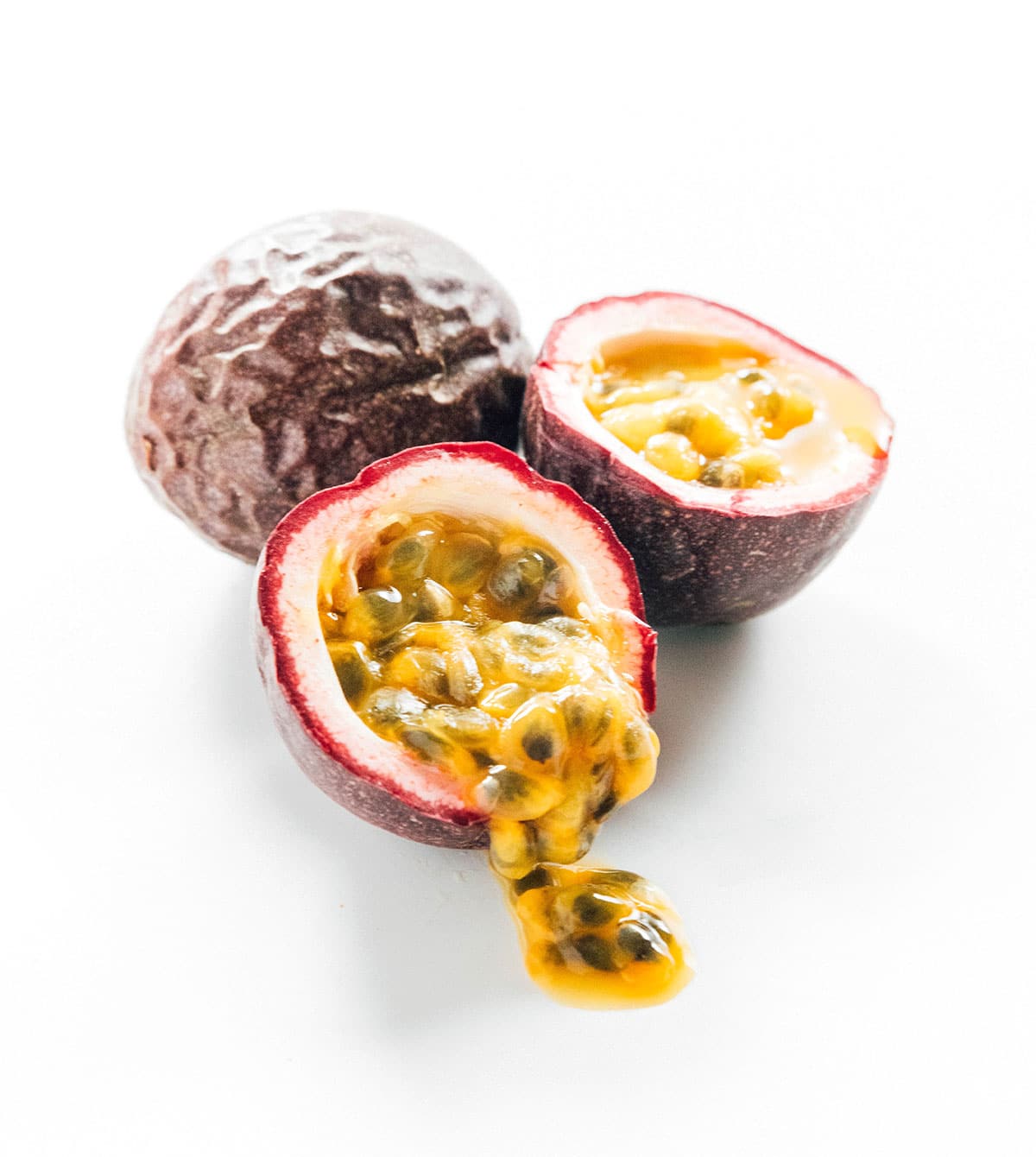
Folklore says when you eat a passion fruit you’ll fall in love with the next person you lay eyes on. I think the scientific evidence behind this is simply that passion fruits are so darn tasty, and coincidentally you’re in love with the world as you nibble down the juicy yellow interior of this tropical flavor bomb.
Passion fruit (or maracuyá in Spanish), is a tropical fruit indigenous to Brazil, Paraguay, and Northern Argentina, though you can now find it growing in many places around the world, to include Hawaii and Florida!
On the outside, passion fruits are typically dark purple, sometimes wrinkly, spheres. On the inside, passion fruits are bright yellow, with many black seeds. The inside is the edible portion of the fruit. Passion fruit tastes tart and sweet, with a strong tropical aroma.
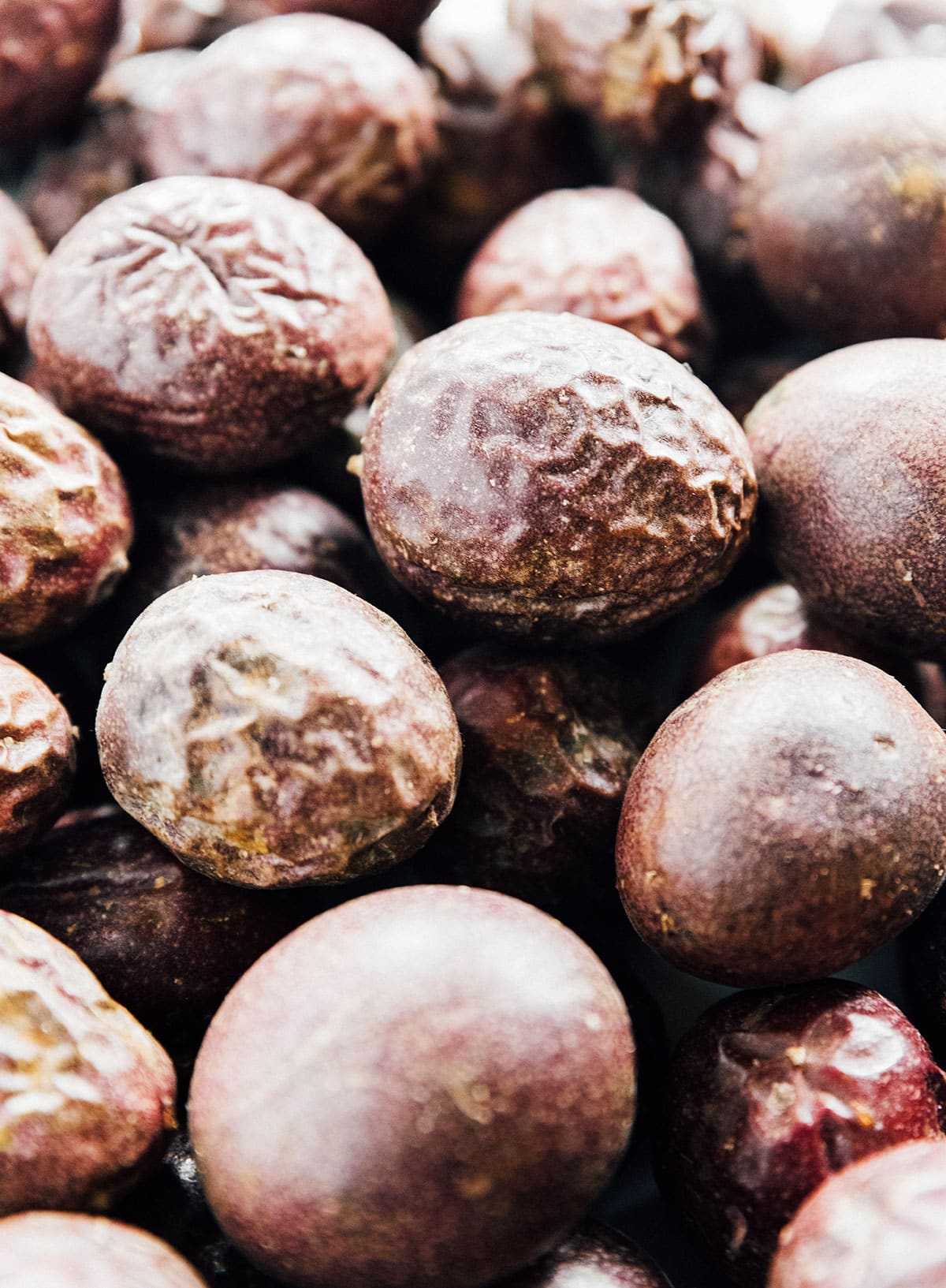
Buying passion fruit
When is passion fruit in season?
Because these are a tropical plant, passion fruit is generally available year round! They’re at their peak in the warmer months.
How to know if passion fruit is ripe
Passion fruit is most ripe when it’s all wrinkly. Scientifically speaking, this is when the fruit is ready to sow its seeds, so the skin weakens and wrinkles. Gastronomically speaking, this is when it’s the YUMMIEST! The ripe passion fruit will also be heavy for its weight – lighter weighing passion fruits typically have less juicy centers.
Passion fruit names around the world
Traveling? Passion fruit goes by a few different names. In Hawaii the common term for passion fruit is liliko’i. In Brazil it’s called maracujá, and in Spanish it’s maracuyá).
Where to buy passion fruit
Passion fruit puree can be purchased frozen in most super markets. Fresh passion fruit can be more difficult to find. Look for it in specialty fruit markets, in international (Asian and Mexican) grocery stores, or buy it online. (I’m a huge fan of purchasing tropical fruits on Etsy, which connects you directly to growers around the world!)
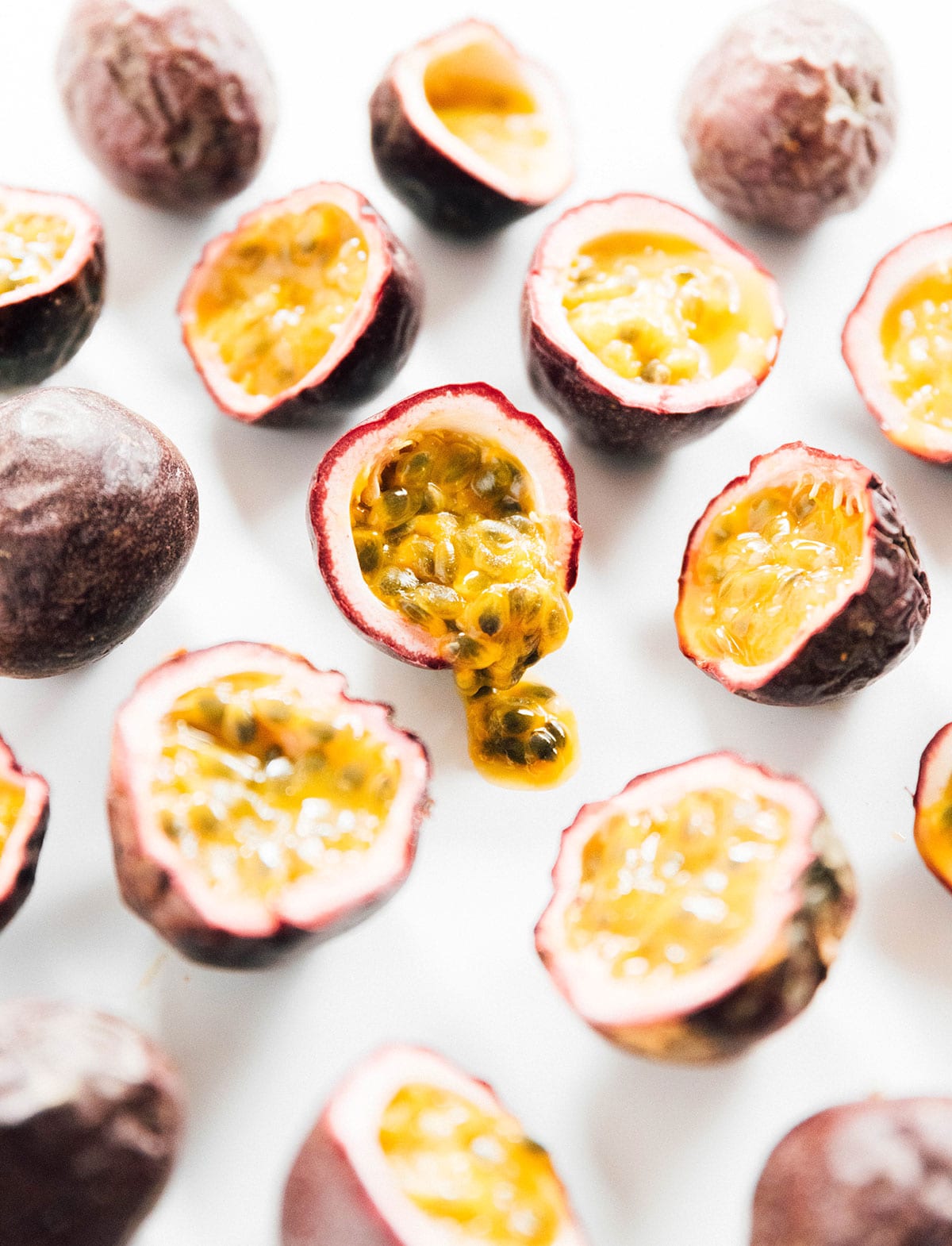
Types of passion fruit
There are many types of passion fruit within the passiflora species of flowers. And while they all differ an insy bit, they’re all going to have sweet, tart, juicy yellow interiors that are interlaced with black seeds, with hard outer casings. There are two distinct variations of the passion fruit which differ by color:
- Purple: Originating in the Southern Brazil/Northern Argentina area, the purple passion fruit has a rich flavor, is less acidic than the yellow, and is really juicy on the inside.
- Yellow: They’re not entirely sure where this variety originates, though it tends to come from tropical areas, like Hawaii. It’s usually a bit bigger while less flavorful.
And in my travels, I’ve come across a few different varieties of passion fruit worth mentioning.
- Granadilla: From the regions around Peru, this variety is yellow but ultra sweet and delicious.
- Maracuya: Common in Brazil, this variety of passion fruit is bright yellow and bigger than most varieties.
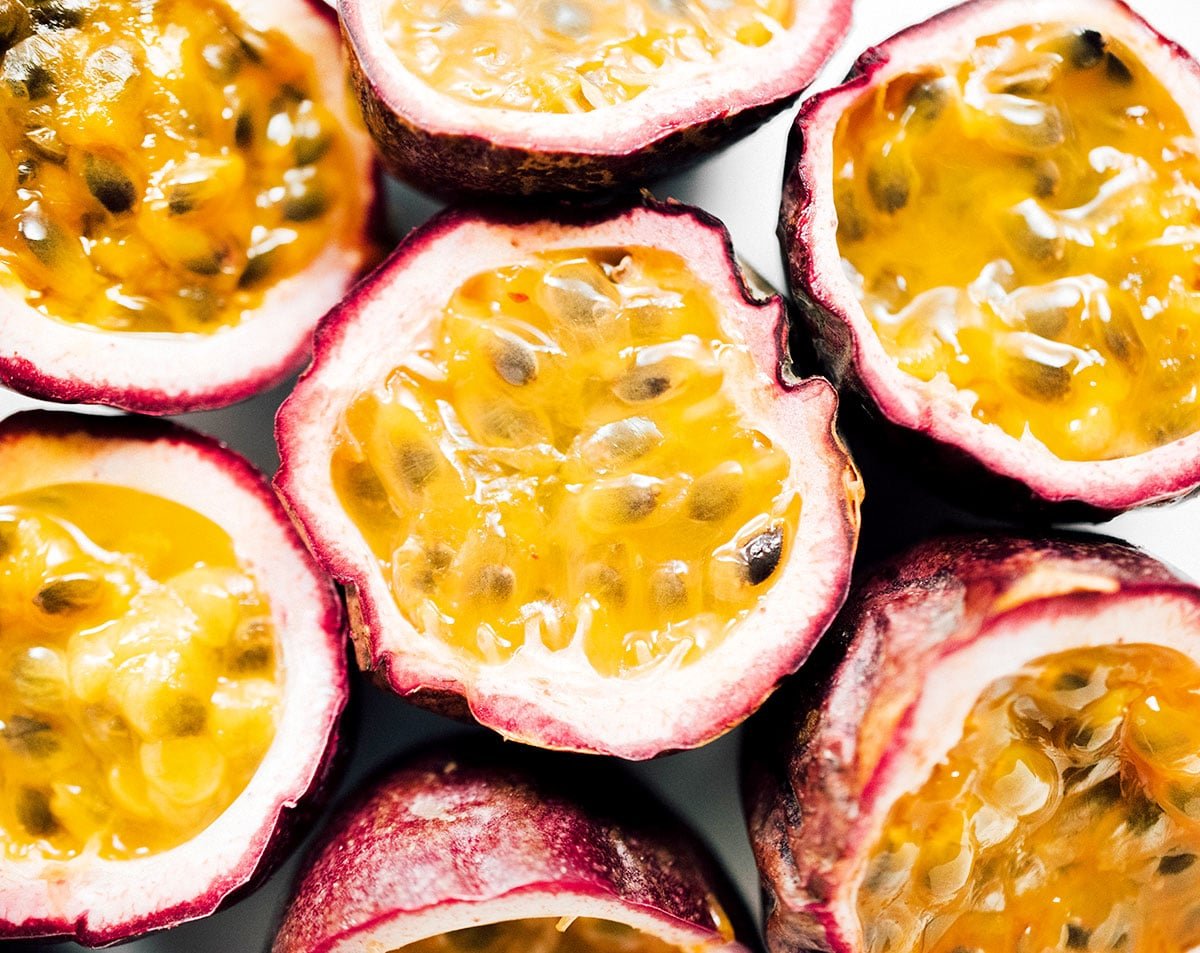
How to eat passion fruit
You can eat everything on the inside (the passion fruit seeds are edible)! The easiest way to eat a passion fruit is to simply:
- Cut the passion fruit in half.
- Scoop the insides out with a spoon – this is called the pulp.
- Enjoy! If it’s tart, feel free to sprinkle on a bit of sugar or sweeter.
From here you can eat it plain, scoop over yogurt, or even make passion fruit curd! If you want to remove the seeds from the passion fruit, simply push the pulp through a wire mesh sieve. This will create a passion fruit puree that’s perfect for baking or creating passion fruit juice or passion fruit smoothies or fruity mojitos.
Need more inspiration? Check out all of our passion fruit recipes!
Not For Furry Friends
Did you know that passion fruit is toxic for dogs? Avoid giving it to your furry friends!
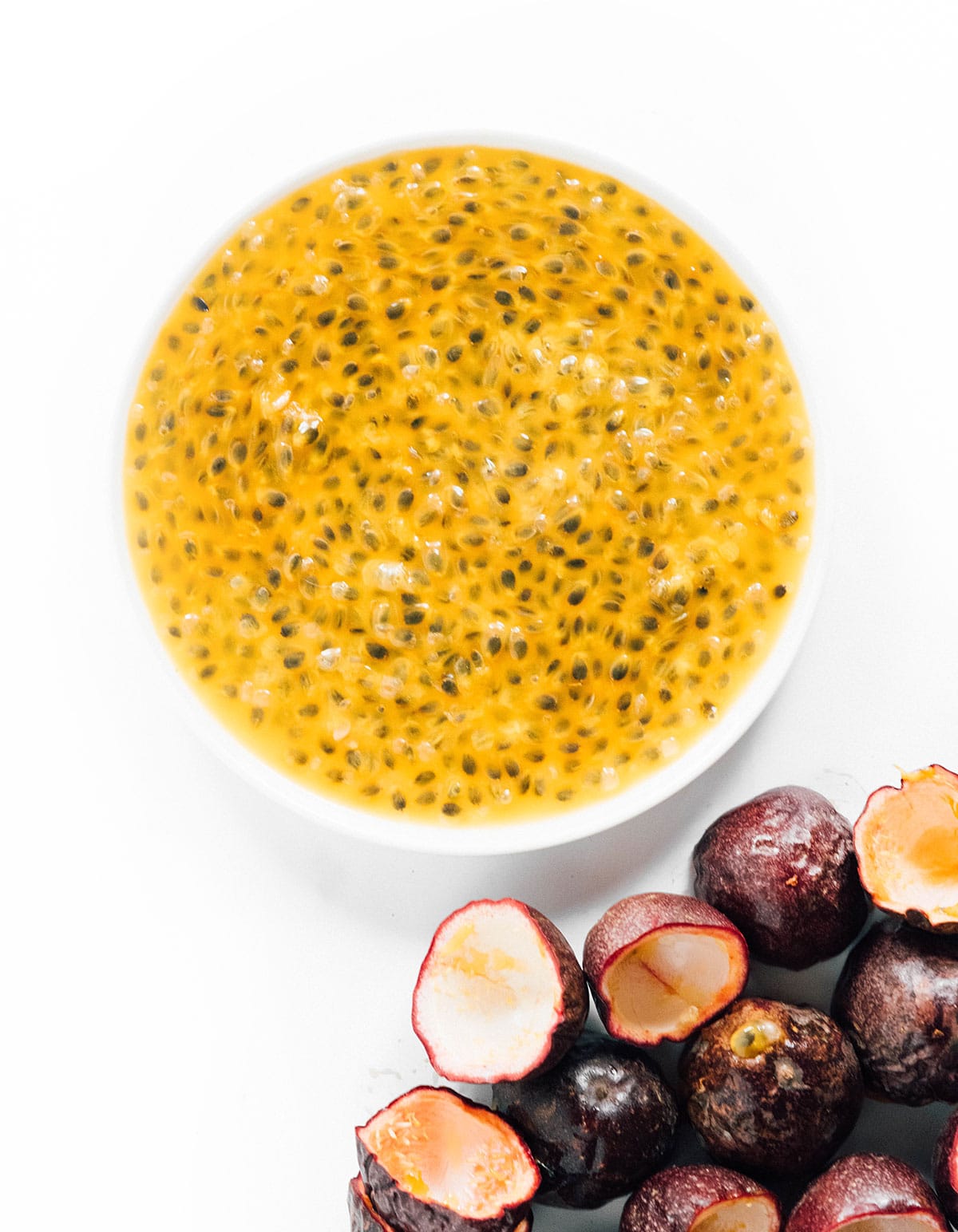
How to store passion fruit
Unripe passion fruit should be left out at room temperature to ripen. Ripe passion fruit can be stored in the refrigerator for about 1 month, or on the counter for about 2 weeks. You can also freeze passion fruit for longterm storage!
Dragon fruit vs. passion fruit
What’s the difference between dragon fruit and passion fruit? While these are both funky looking tropical fruits, they’re very different one you cut into them. While passion fruit is intensely tart and sweet, dragon fruit has a more mild flavor, tasting like a combination of pear and kiwi. And while passion fruit has a juicy pulp that is quite liquidy when cut into, dragon fruit has a solid texture that can be sliced or diced.
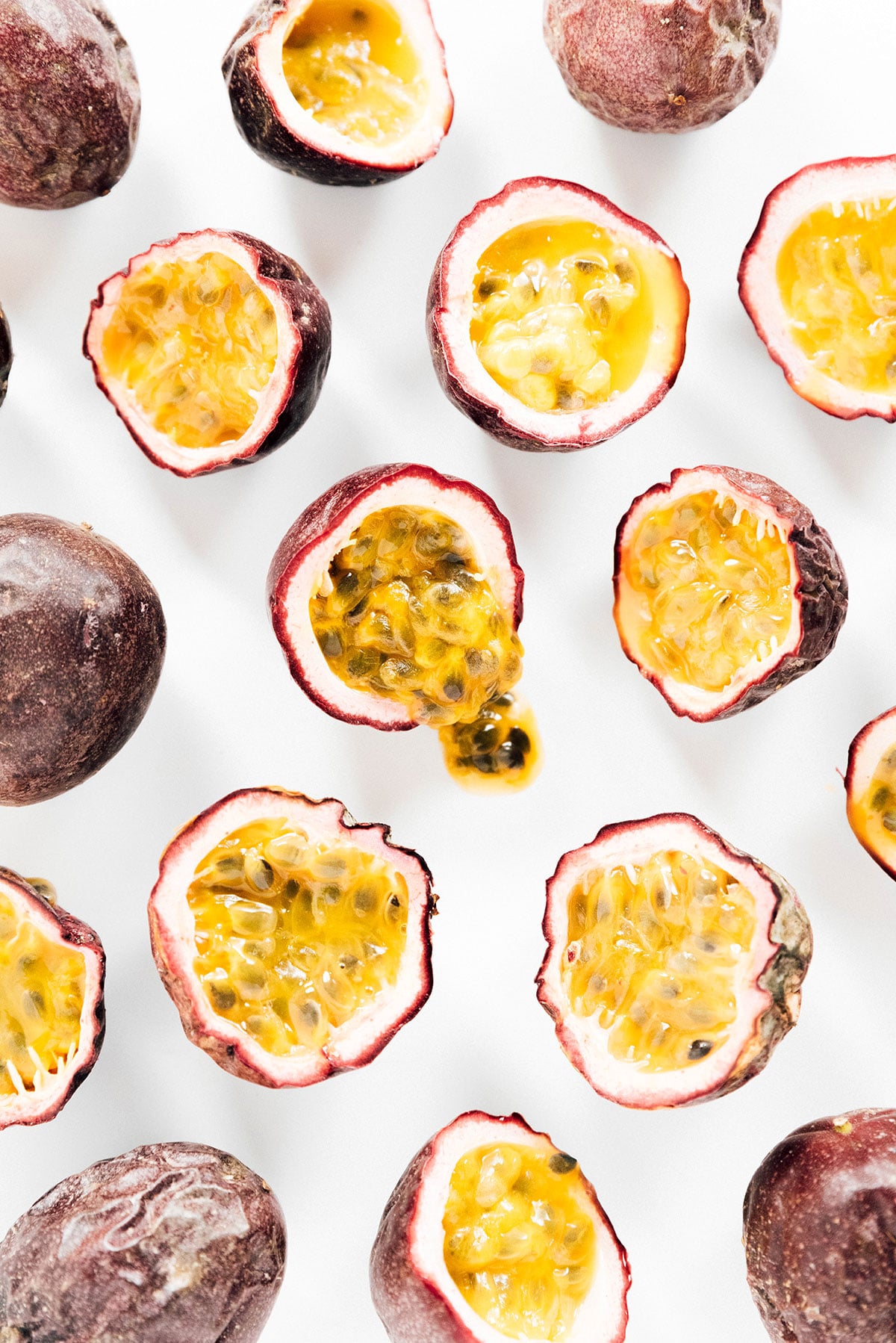
Passion fruit Health Benefits
Passion fruit has a host of health benefits for your body, to include being high in antioxidants, aiding digestive health, and having a low glycemic index. Here are is the nutrition information for passion fruit (values calculated for 1 fruit).
Calories: 17
Passion fruit is very low in calories, making it a great choice for people looking to lose weight.
Carbohydrates: 4g
Passion fruit is low in carbs, making it great if you’re on a low carb or keto diet.
Fiber: 2g
The seeds of the passion fruit give it some fiber, which will help you feel full. 1 [assion fruit contains 7% of your Daily Value (DV) for fiber.
Protein: 0g
As with most fruits, passion fruit has no protein.
Fat: 0g
As with most fruits, passion fruit has no fat.
9% Daily Value of Vitamin C
1 passion fruit contains 9% of your Vitamin C needs for a day! This antioxidant helps maintain your immune system as well as helps to create collagen.
5% Daily Value of Vitamin A
Passion fruit is also a source of Vitamin A, which is essential in many components of healthy vision, as well as immunity!
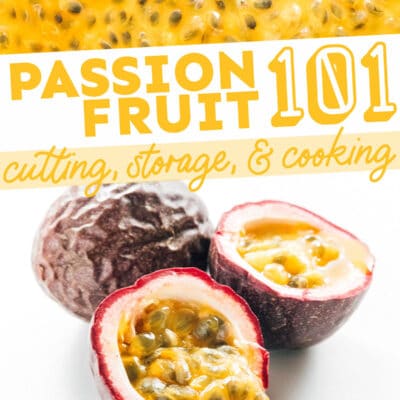
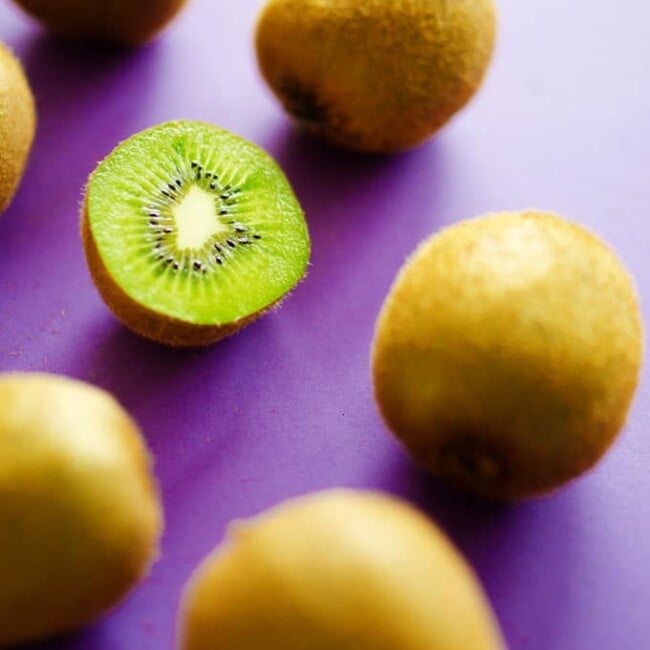
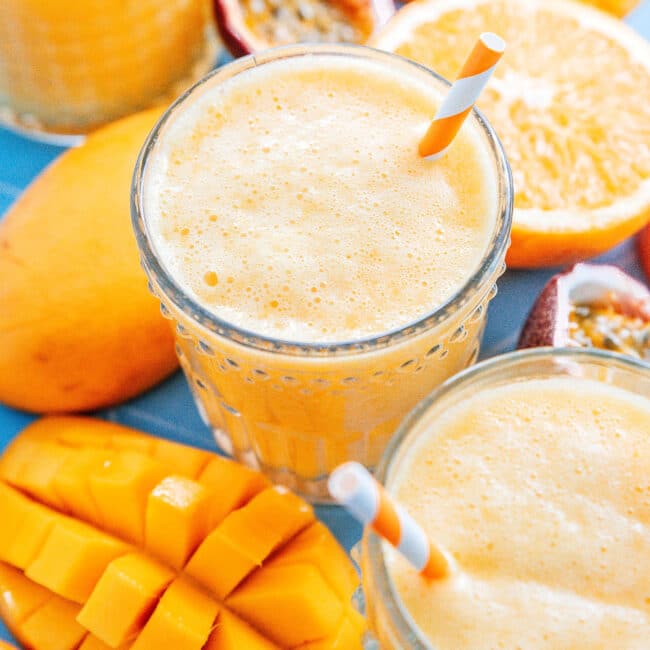
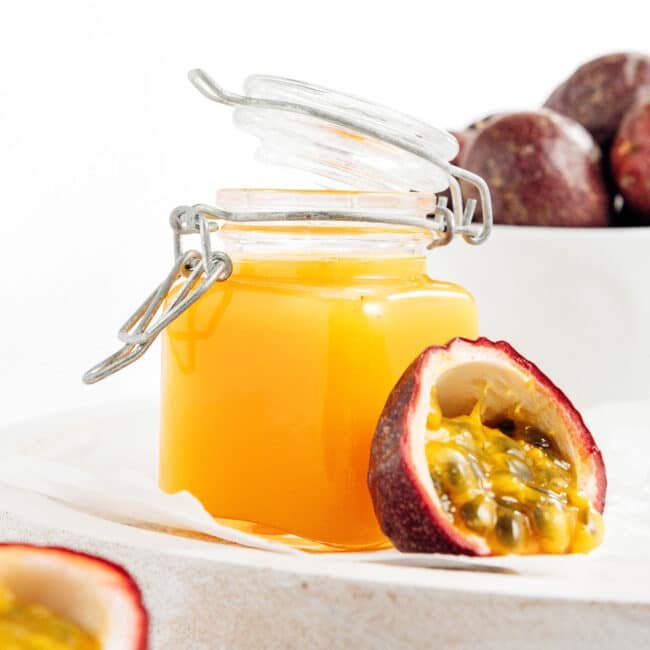
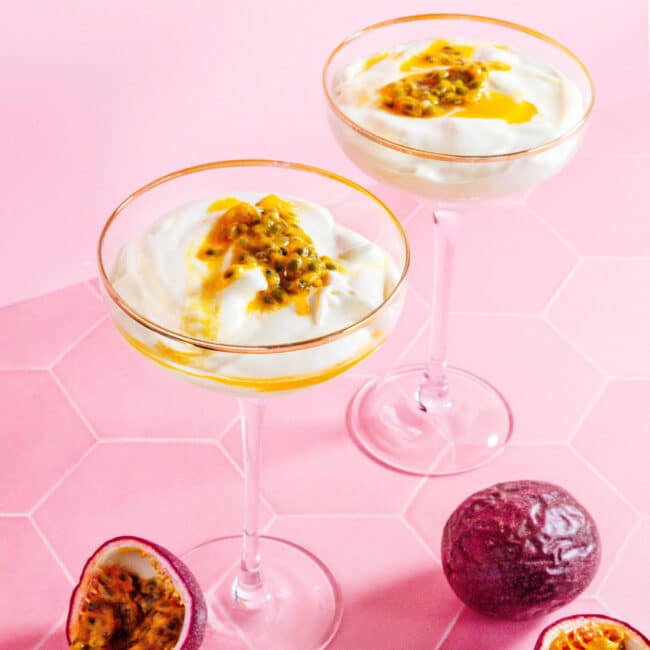
Maria says
Hi very interesting, In my childhood growing up in Puerto Rico 🇵🇷 I love eating parcha,purchases, name we called passion fruit, eating from direct plants or in different treats,i still love it and miss very much having it fresh
claire martin says
And in Puerto Rico, they have gallons of it made fresh every morning and they call it
Parcha…..and it is DIVINE!!!!! What a great way to start a day!!!!!!!!! very available on western end of island around La Parguera and Boqueron and Cabo Rojo!!!!!! so beautiful and SO TASTY……everyone should visit there at least once, or better yet, once a year!!!!!!!!!!!!!!
Lemon=world says
Hi Sarah,
Would lavender go with passion fruit in a tart?
Thanks in advance!
Sarah says
That would be delicious! 😀
Derek says
Thanks for the article – delicious fruit!
Just to clarify, in Brazil, it’s called a maracujá. Maracuyá with the Y is the Spanish word for it.
Edith says
Is the passion fruit ripe already when it starts changing from green to yellow then purple
Sarah says
The ripest passion fruit will have a darker color, either dark purple or dark yellow/orange/red, and it’ll be a bit wrinkly! 😀
Teresa Holland says
Passion fruit is green and it seems to be very light weight on the vine but it’s getting semi-wrinkled is that normal?
Sarah says
I believe that’s normal!
Lynda says
I have passion fruit plant that was bought at a supermarket it has grown madly and now has lots of green fruit. Can I eat this? One left in fruit bowl has now changed from Green to yellow/red/orange.
Sarah says
You’ll probably want it to change to yellow/purpleish before eating! But it could depend on the plant!
Marie Sheairs says
I think your talking about the same Passion Fruit I have . I bought from a Mexican market, It starts out dark green and turns light lime green and wrinkly when ripe and some have fallen off.
I just read this variety can be ripened inside the house. So now I pick when size is big. This variety never turns purple.
david says
It’s called Chinola here in the Dominican Republic and comes in the yellow variety. I love the tangy sweet flavor.
Robert B Subee says
Same in Hawaii
Muhammad khalid says
Very informative one
Lyn Groth says
We have a vine that has taken over our rotary clothes hoist & created a Locke shaded area where we can sit & enjoy the garden. This season we have had approximately 100 passion fruit from this vine & have frozen some in ice block trays. Best with ice cream & make passion fruit curd & fruit salad with other fruits as well. Delicious
Gail Harvey says
How does passion fruit lower your blood pressure, how do I prepare it?
Sarah Bond says
Hi Gail! I’m not sure about passion fruit’s ability to lower blood pressure, but it’s packed with vitamins and minerals! Here are our favorite passion fruit recipes.
Augustine Agyei says
Is very good fruit
Ray thomas says
So far this year our vine has produced over 200 juicy and sweet passion fruit. It is still producing in the middle of winter. Can you tell me if I should cut it back before the warmer months. I live in S/E Queensland
Sarah Bond says
I’m really not sure on the gardening aspects of passion fruit. I’m envious of how many you’re getting though!
Robert B Subee says
I grew up on OahuI have never seen Lilikoi dark purple or any colors besides green or yellow on the outside. I realize that there’s different strains but the fruit I used to pick from the vine was always smooth on the outside and mostly yellow though the inside in the pic looks exactly like lilikoi which is great with soyu vinegar and sugar . Mix to taste .
PAT H says
HI WHEN PASSION FRUIT IS NOT IN SEASON WHERE CAN YOU BUY IT. I UNDERSTAND IT IS VERY GOOD IN LOWERING BLOOD PRESSURE BECAUSE OF ITS HIGH CONTENT IN POTASSIUM
Sarah Bond says
Etsy is a great place to buy them actually! 😀